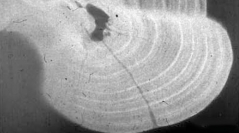

 Comptes Rendus Palevol
10 (5-6) - Pages 347-355
Comptes Rendus Palevol
10 (5-6) - Pages 347-355The aim of this short review is to emphasize the richness of the comparative histological studies on both fossil and extant Osteichthyes. Some selected examples in both Sarcopterygii (excluding tetrapods) and Actinopterygii show how it is possible to improve our knowledge on bone biology of extinct species but also to obtain new data on their palaeobiology or on their paleobiogeography. After a brief survey of the organization of bony tissues in osteichthyes, we review some examples of skeletal peculiarities in the following extinct and extant taxa: the histological structure of polypterid scales that suggests a hypothesis on the possible age and the biogeographical history of this basal actinopterygian taxon; the ossified lung of the fossil coelacanthids, with a discussion on its potential function; the histological organization of the sarcopterygian derived elasmoid scales (of Eusthenopteron sp., Latimeria sp. and Neoceratodus sp.). These comparative palaeohistological and histological data provide the basis of a general discussion of the evolutionary trends of bony tissues and their derivatives in Osteichthyes.
Bony tissues, Histology, Palaeohistology, Osteichthyes, Palaeozoic, Mesozoic